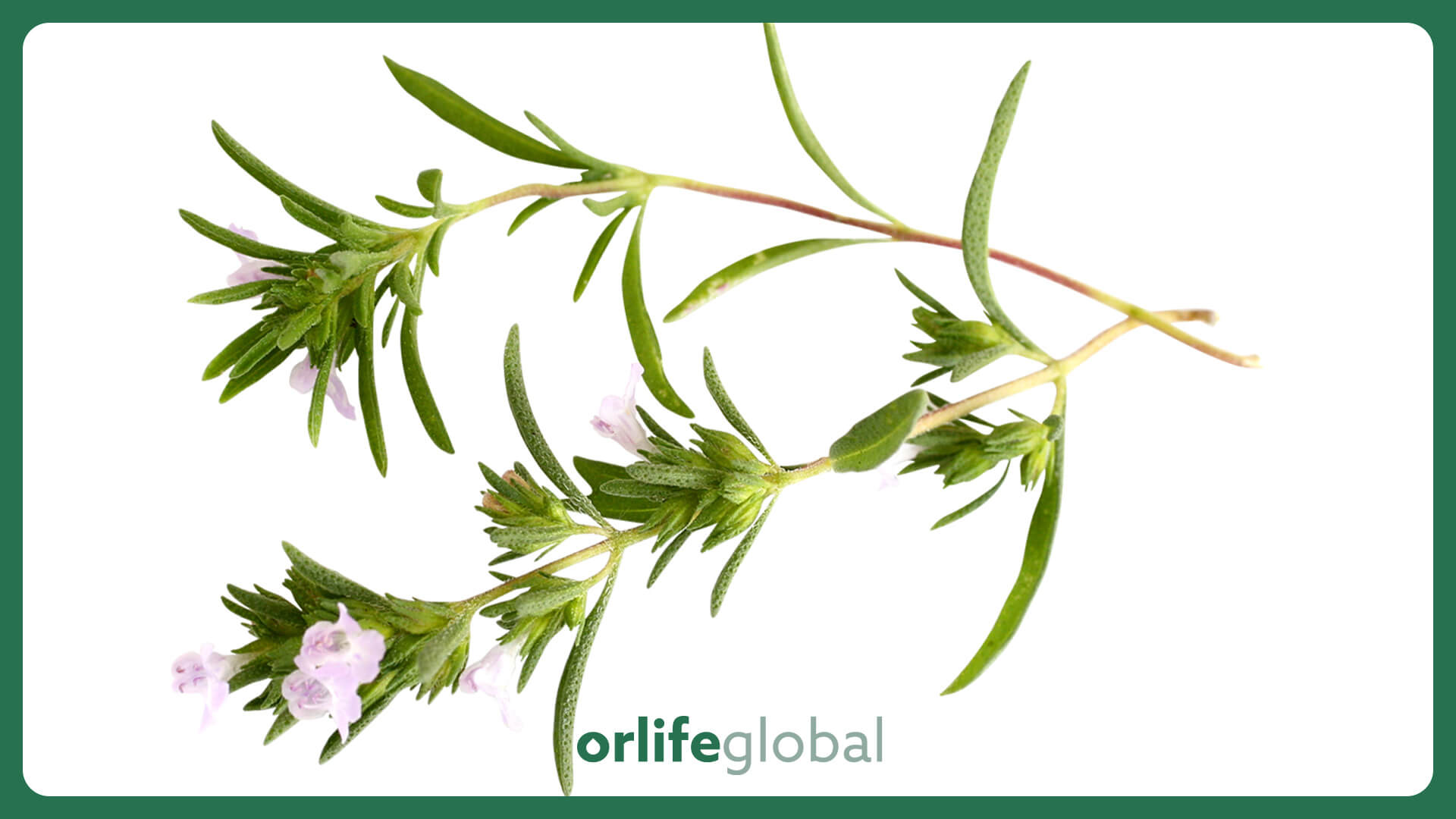
Thymbra Essential Oil
Thymbra Essential Oil
The genus Thymus belongs to the plant family Labiatae. Labiatae family members are easily hybridized. That is, there is interbreeding of different species, making it difficult to define species and subspecies. Thyme is probably the aromatic plant with the most diverse range of chemotypes [1].
The thyme genera used commercially in Turkey, all of which belong to the Lamiaceae family, are Origanum, Thymbra, Coridothymus, Satureja and Thymus [2].
There are two species of Thymbra genus, Thymbra spicata var spicata and T sintenisii, which grow in the Southeastern Anatolia Region of Turkey. Thymbra spicata L. plant is known as “Zahter”, “Karabaş Kekik” or “Kara Kekik” in Turkey. Zahter essential oil is obtained as a result of steam distillation of the tops and leaves of Thymbra spicata L. plant. The major compounds found in Thymbra essential oil are Carvacrol, γ-Terpinene and p-Cymen. In addition to these components, It may contain low rates of compounds such as alpha-Terpinene, beta-Caryophyllene, alpha-Pinene and Thymol. Carvacrol is a component with antibacterial, antispasmodic, antiseptic, antimicrobial, cytotoxic, antioxidant and antifungal activities [3,4,5].
Directions:
Thymbra essential oil may be applied via inhalation or topically. Before using this essential oil, carefully read Warning & Safety Requirements.
To apply to the skin, do not use undiluted essential oils on your skin.
Used topically, Thymbra essential oil helps to promote blood circulation. This essential oil can help in relieving the pain of arthritis, muscle and joint pains. Since It has potent antibacterial and antifungal properties, It can be used to treat wounds and skin infections.
Used in aromatherapy, Thymbra essential oil essential oil can improve the efficiency of the respiratory tract and also can help purify the air.
Suggested Uses:
Try adding it to a bath or diffuser as aromatherapy, or combining with different essential oils to strengthen its effect.
Warning & Safety Requirements:
- If you are pregnant or lactating, please consult with your doctor before using any product containing essential oils.
- For external use only.
- Can cause skin irritation, avoid contact with eyes and mucous membranes.
- Not suitable for children.
Storage Conditions:
Store oils in a cool dry place away from direct sunlight and out of reach of children.
References:
- [1]. Clarke, S.. Essential Chemistry for Aromatherapy. 2nd Ed. Elsevier Health Sciences. 2008.
- [2]. Meriçli-İlisulu, F., Tanker, M., The volatile oils of some endemic Thymus Species Grown in Southern Anatolia. Planta Medica, 340, 1986.
- [3]. Kaya, D. A., Arslan, M., İnan, M., Başkaya, S., Diurnal Changes on Content and Composition of Thymbra spicata L. Essential Oil, Research Journal of Biological Sciences, 8(1), 6-10, 2013.
- [4]. Hancı, S. (S.), Şahin, S., Yılmaz, L., Isolation of volatile oil from thyme (Thymbra spicata) by steam distillation, Nahrung/Food, 47(4), 252-255, 2003.
- [5]. Kılıç, T., Analysis of Essential Oil Composition of Thymbra spicata var. spicata: Antifungal, Antibacterial and Antimycobacterial Activities, Verlag der Zeitschrift für Naturforschung, 61c, 324-328, 2006.
CONTACT NOW


